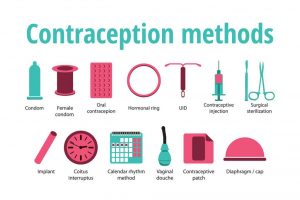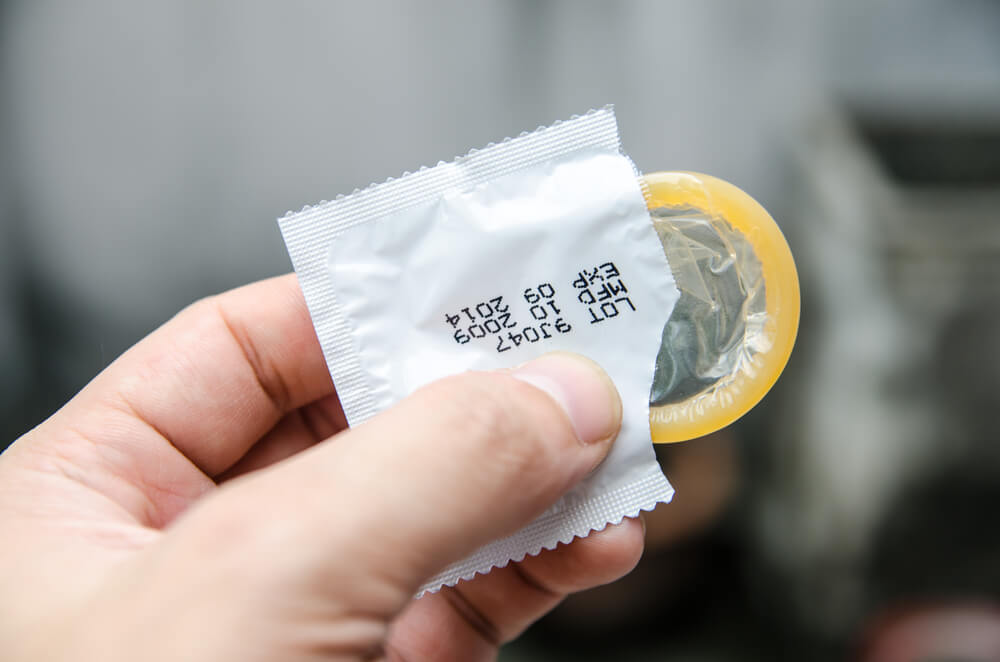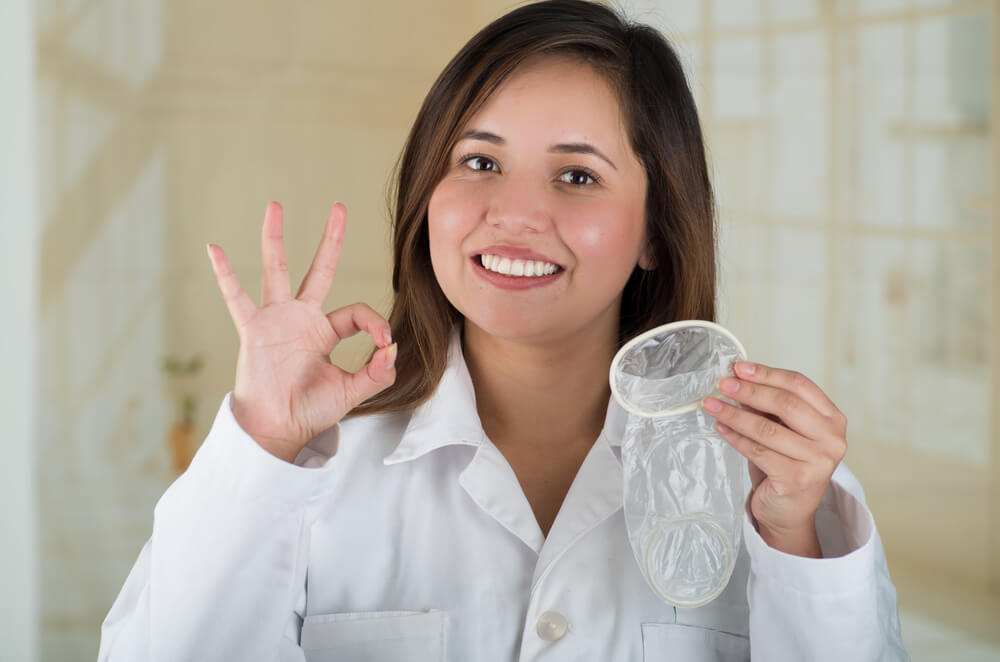Non-hormonal Contraceptives

Did you know that non-hormonal contraceptives exist? If your doctor has recommended that you use these types of contraceptives, or if you’re simply curious to learn what they’re all about, we’ll tell you all you need to know about them below.
Don’t worry, it’s a lot simpler than it seems!
While they do achieve their goal of preventing pregnancy, many hormonal contraceptive methods may lead to consequences for women, since they use synthetic hormones.
What are non-hormonal contraceptives?
Non-hormonal contraceptives fulfill their function of preventing the fertilization of the egg by the sperm without the process interfering in any way with the female menstrual cycle.
This means that non-hormonal contraceptives are less invasive for the female body.
A well-known fact is that 62% of women between 15 and 44 years old use some method of contraceptive. The most popular methods include the following:
- The pill (hormonal method)
- Condoms (non-hormonal) – for both males and females
- Family planning and surgical methods, which don’t involve hormones, are also widely used.
How do these contraceptives work?
In general, contraceptives act as a barrier. Their function is to prevent contact between the egg and the sperm. This barrier can take many forms and are sometimes reinforced through spermicidal actions.
Other types of non-hormonal contraceptives include the family planning method. This lets a couple know when to avoid sexual relations, according to the stage of the menstrual cycle the woman finds herself in.
On the other hand, surgical methods are more effective than this planning and are usually permanent.
Alternatively, surgical methods are more effective than this planning and are usually permanent.
While they can be very effective, non-hormonal contraceptives also have some disadvantages. Next, we’ll explain the advantages and disadvantages you may face through the use of these non-hormonal contraceptives.
Types, advantages and disadvantages

The male condom
The male condom is a latex cover that prevents the passage of sperm into the uterus. It is 99% effective in preventing pregnancy.
Its main advantage, besides its contraceptive effectiveness, is that it also protects against sexually transmitted diseases.
Its disadvantages have to do with its use. Unlike other permanent methods, the condom must be put on every time a sexual encounter begins, and must be replaced as many times as necessary.
Due to its material and design, it could easily suffer some damage that can render it ineffective.
The female condom
Similarly to the male condom, the female condom consists of a latex bag which prevents the passage of sperm into the egg. It also protects from sexually transmitted diseases. Generally, the reuse of a female condom should be completely avoided.
The disadvantages of this contraceptive method include the fact that there is widespread misinformation about them, and so there are many taboos in society regarding the use of female condoms.
Additionally, its main disadvantage lies in its difficulty of use. Of course, this varies from woman to woman.

Diaphragm
The diaphragm is a latex circle that is placed inside the vagina before intercourse. Its main advantage is that the woman is in control of its placement, and it also covers the cervix completely.
Copper IUD
The copper IUD is a more invasive and permanent method (lasts 5 to 10 years). The IUD is an object, made of plastic and copper, which is placed inside the cervix.
Its function is to attack the sperm so that it cannot reach the egg. It also releases copper particles that affect the adhesion of a fertilized egg.
Among its advantages is that it can be placed and forgotten about for a long time. It has an effectiveness rate between 97% and 99%. However, one disadvantage is that it does not prevent STDs.
It’s also a risk for women who want to be mothers, because its use can narrow the cervix too much, bringing about problems with fertility or at the time of vaginal birth.
Male and female sterilization
Sterilization is a surgical process that works as a contraceptive method without the use of hormones. In men, this surgical procedure is known as a vasectomy, which is permanent and is performed in order to prevent the transfer of sperm to semen.
Its main advantage is its contraceptive effectiveness. Other benefits include the fact that it doesn’t prevent ejaculation, nor does it affect virility.
Female sterilization is a process that allows the ovaries to be isolated from the uterus, which prevents the eggs from reaching it. This surgical procedure has an effectiveness of 99%. In addition, the procedure can be reversed if desired.

The sponge
This contraceptive is a synthetic sponge that is soaked with spermicide. It blocks the cervix, absorbs semen, and fights sperm. One of its advantages is its rate of effectiveness, which is between 89% and 91%. Additionally, it can be placed by the woman herself.
Among its disadvantages is that for women who are already mothers, its effectiveness decreases to 68%. It also doesn’t protect against STDs and must remain in place for at least 6 hours after sex.
Another option: family planning
Not only does this method not involve the use of artificial hormones, but it also doesn’t require the use of any special product or surgical intervention.
Family planning consists of programming our sexual activity depending on the stage of our menstrual cycle.
The purpose of family planning is to avoid participating in intercourse on fertile days. It’s an effective method only when a woman’s cycle is regular. However, this method can be very risky and imprecise due to natural causes.
In addition to the periodic abstinence method, other methods of family planning include:
- Interrupted intercourse (ejaculating outside of the vagina)
- Prolonged lactation (if a woman feeds her baby only through breastfeeding, she can remain without ovulating for up to six months)
None of these family planning methods are considered effective in their entirety.
Non-hormonal contraceptives fulfill the same function, while taking care of other aspects of health. However, they aren’t always as effective and simple as hormonal methods can be.
All cited sources were thoroughly reviewed by our team to ensure their quality, reliability, currency, and validity. The bibliography of this article was considered reliable and of academic or scientific accuracy.
- Abdinasab, M., Firouzabadi, R. D., Farajkhoda, T., & Abdoli, A. M. (2017). Lack of association between Cu T-380A intrauterine device and secondary infertility in Iran. International Journal of Fertility & Sterility, 10(4), 343. https://www.ncbi.nlm.nih.gov/pmc/articles/PMC5134749/
- Beksinska, M., Wong, R., & Smit, J. (2020). Male and female condoms: Their key role in pregnancy and STI/HIV prevention. Best Practice & Research Clinical Obstetrics & Gynaecology, 66, 55-67. https://www.sciencedirect.com/science/article/abs/pii/S1521693419301774
- Centros para el Control y Diagnóstico de Enfermedades (2013). Resumen de la hoja informativa sobre los condones. CDC. Consultado el 28 de julio de 2023. https://www.cdc.gov/condomeffectiveness/spanish/brief.html
- Hassoun, D. (2018). Anticoncepción vaginal o métodos de barrera femeninos. EMC-Ginecología-Obstetricia, 54(2), 1-6. https://www.sciencedirect.com/science/article/abs/pii/S1283081X1889333X
- Instituto Mexicano de los Seguros Sociales (s.f.). Dispositivo Intrauterino de Cobre (DIU) T-Cu. Instituto Mexicano de los Seguros Sociales. Consultado el 28 de julio de 2023. https://www.imss.gob.mx/salud-en-linea/planificacion-familiar/diu-cobre
- Moreira, I. F. D. A., Bianchini, M. P., Moreira, G. R. C., Almeida, A. M., & Rezende, B. A. (2020). Sexual function and metabolic/hormonal changes in women using long-term hormonal and non-hormonal contraceptives: a pilot study. BMC Women’s Health, 20(1), 1-11. https://bmcwomenshealth.biomedcentral.com/articles/10.1186/s12905-020-01107-1
- Planned Parenthood (s.f.). ¿Cuán eficaz es la esponja? Consultado el 28 de julio de 2023. https://www.plannedparenthood.org/es/temas-de-salud/anticonceptivos/esponja-anticonceptiva/cuan-eficaz-es-la-esponja
- Stover, J., Rosen, J., Carvalho, M., Korenromp, E., Friedman, H., Cogan, M., & Deperthes, B. (2017). The case for investing in the male condom. PloS one, 12(5) https://journals.plos.org/plosone/article?id=10.1371/journal.pone.0177108
This text is provided for informational purposes only and does not replace consultation with a professional. If in doubt, consult your specialist.
